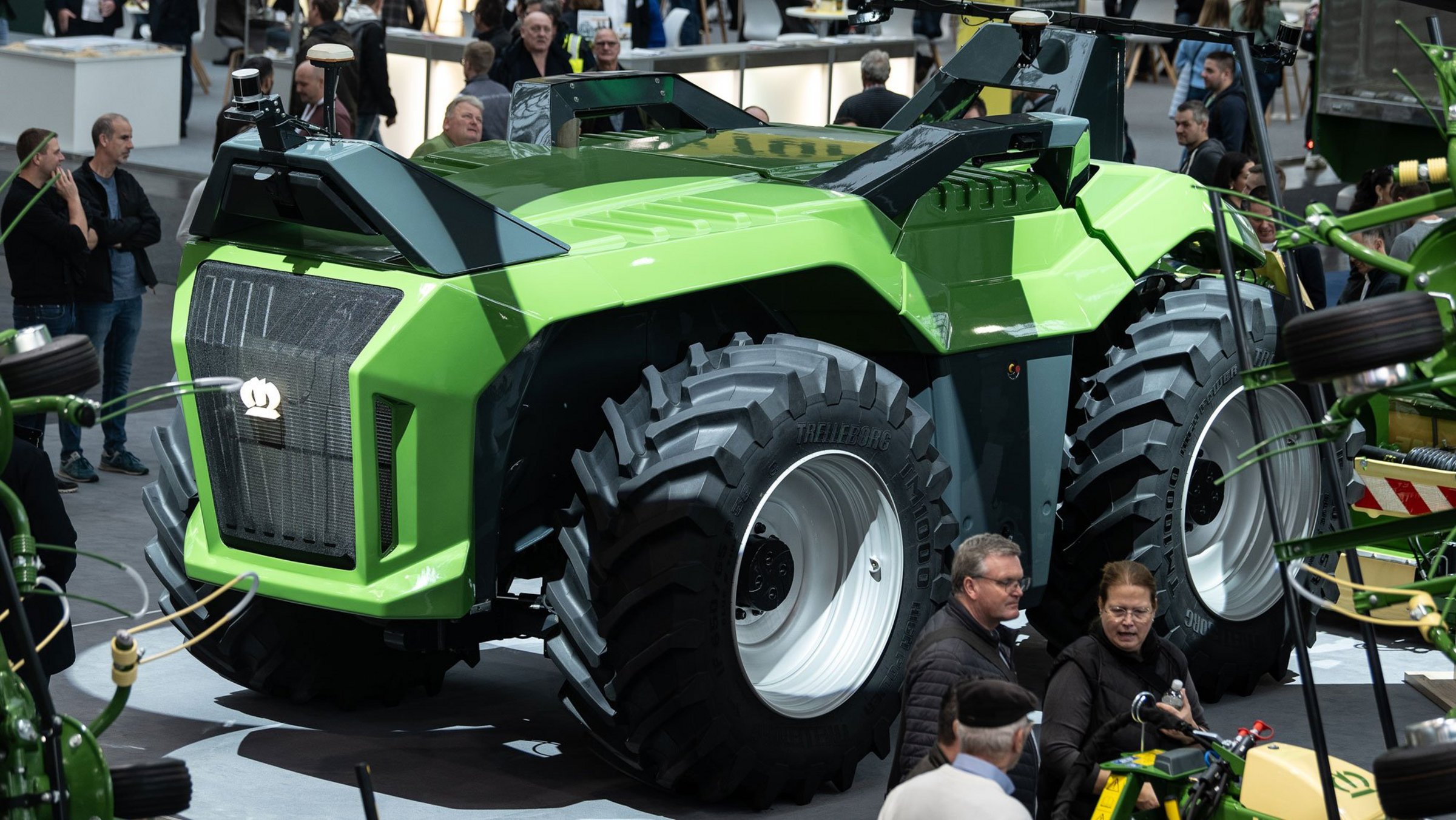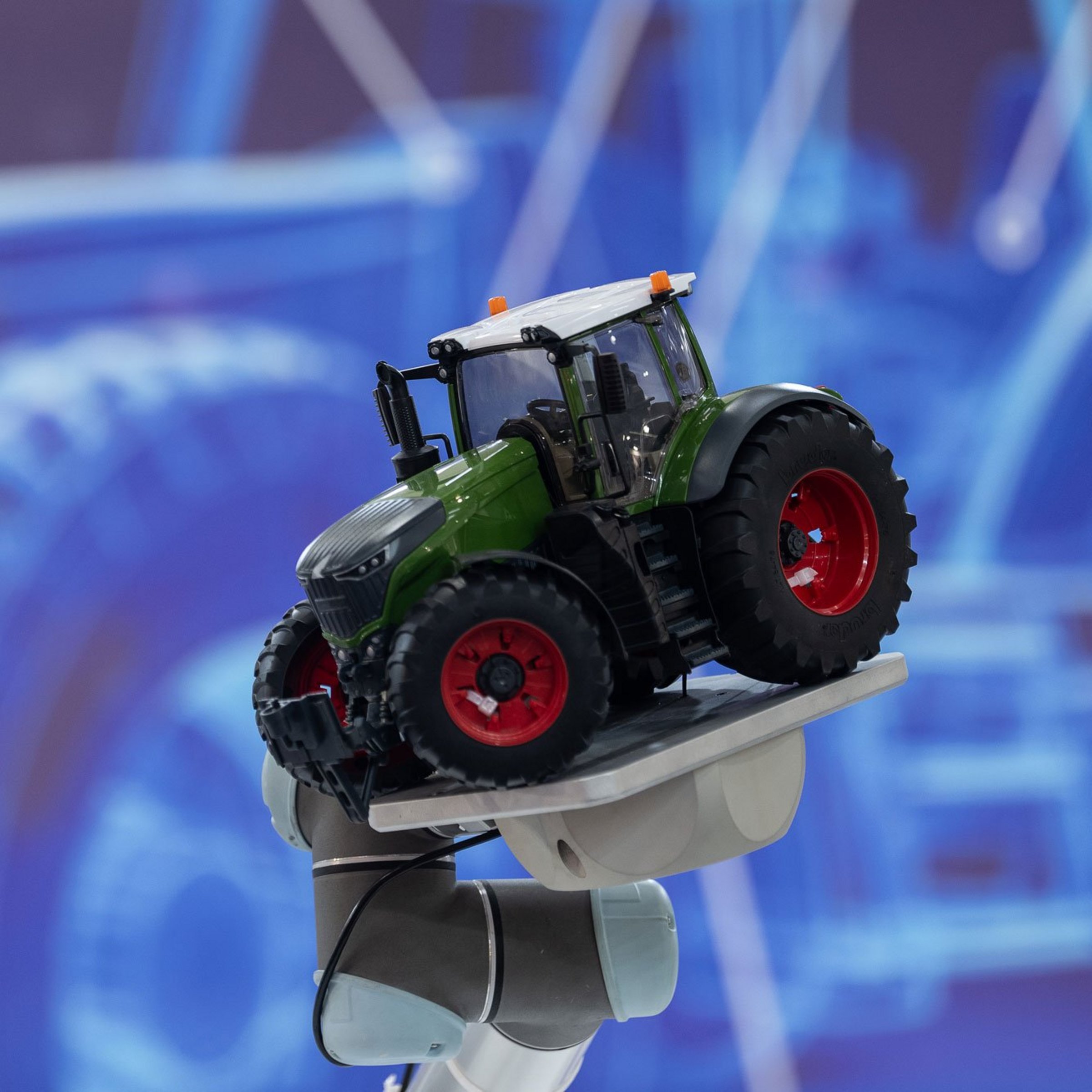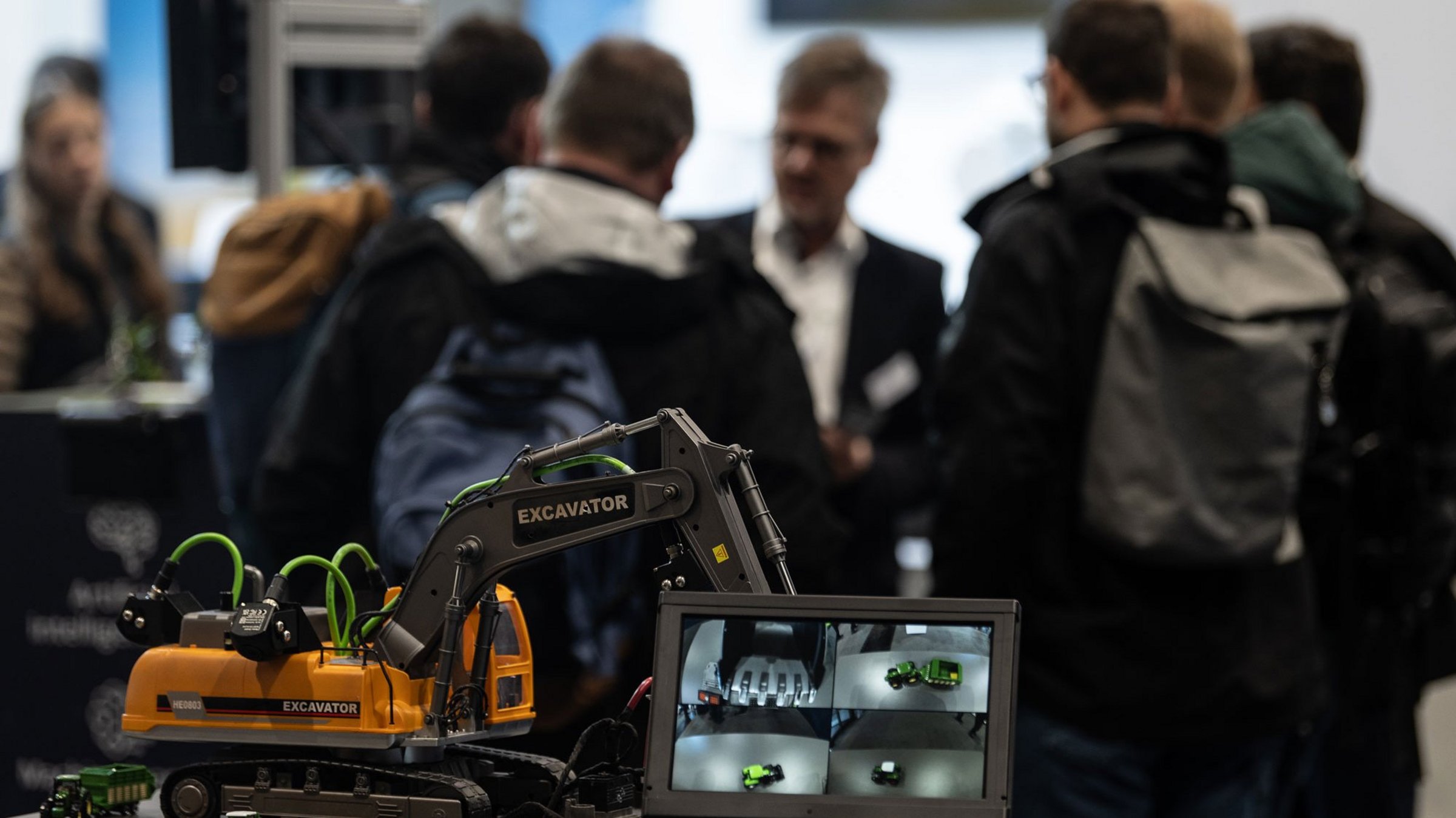AI-Based technologies for sustainable agriculture
Sensor Fusion and Edge Computing in precision and smart farming
Agricultural machinery manufacturers today face the challenge of implementing complex assistance functions for precision and smart farming while maintaining the reliability and simplicity of their systems. Sensor fusion and edge computing are among the key technologies that will be showcased and discussed in depth from 9 to 15 November in Hannover, Germany, at both AGRITECHNICA and SYSTEMS & COMPONENTS. Recent market information indicate that when farmers want to estimate the abundance of their harvests, it’s no longer just experience that provides the answer—but AI-powered technology platforms.
Smart farming technologies are becoming increasingly important for optimizing field operations. A defining feature of smart agriculture is site-specific management down to the smallest plot. This involves continuously collecting and analyzing data—for example, on soil erosion in individual fields or the growth behavior of cultivated plants. If weather-related delays affect the ripening process, combine harvesters are redirected to other locations. This allows contractors to deploy their machines and personnel in a data-driven and targeted manner. Ideally, each individual crop is supported in a way that maximizes its yield potential.

Real-Time Data Drives Automation
What progress is being made in precision farming? Petra Kaiser from the DLG (German Agricultural Society) has been closely following the developments that are being brought together under the guiding theme “Touch Smart Efficiency” at this year’s AGRITECHNICA and SYSTEMS & COMPONENTS. “The agricultural sector is undergoing a profound technological transformation, characterized by machines equipped with numerous sensors and processors,” says the Brand Manager of SYSTEMS & COMPONENTS.
In addition to autonomous tractors for precise soil cultivation and sowing, autonomous spraying drones for targeted weed control, and intelligent irrigation systems that automatically adapt to weather conditions and soil moisture, driverless agricultural robots for gentle harvesting are also part of the picture. These are undoubtedly among the most striking representatives of digital agriculture.
Whether sowing, fertilizing, or harvesting—data from machines is playing an increasingly important role in achieving greater efficiency and sustainability. For example, contactless torque sensors for measuring power at the PTO shaft help control machines more precisely. As easy-to-integrate plug-in solutions, they enable precise regulation of spreading discs in fertilizer spreaders—potentially reducing fertilizer use by up to 20 percent.
But to meet the demands of increasingly autonomous agricultural machinery, sensors must do more than measure individual states. By fusing multiple measurements, they provide a complete picture of machine position and movement.
Autonomy on the Verge of Mass Adoption
The innovations on display in Hannover combine smart sensors, AI, and robotics to automate agricultural tasks even in complex terrain. To enhance safety and productivity—even with less experienced operators—advanced assistance functions are increasingly being integrated into mobile work machines.
For example, John Deere plans to fully automate all steps from seeding to harvesting soybeans and corn by 2030. AI-powered tractors have already reached autonomy level 3, meaning they can operate independently without human intervention. Thanks to neural networks and sophisticated algorithms, mobile machines analyze terrain, detect obstacles, identify objects, plan routes, and execute control commands for precise maneuvers.
“Full automation is still under development, but we’re already seeing significant market progress, which is reflected at the SYSTEMS & COMPONENTS booths,” says Kaiser. The benefit for users: simplified operation with consistent or improved quality, higher productivity, and better energy efficiency.
Sensor fusion is one of the key technologies driving progress in this area—because tractors, combine harvesters, and other agricultural machines are collecting and analyzing more and more data to make real-time decisions. Artificial intelligence enables the integration of data from diverse sources, revealing patterns that would otherwise go unnoticed.
Predictive maintenance uses machine learning techniques to detect anomalies. By analyzing vibration and audio data collected from the machine, failures can be predicted before they occur—reducing maintenance costs and minimizing downtime.

Sensor Fusion as the Basis for Yield Forecasts
Only by combining data from various sensors can a more complete and accurate picture of the environment be obtained. In the context of precision agriculture, this means integrating data from satellites, soil sensors, weather stations, drones, and IoT components from machines and equipment. The fusion of these data sources creates a holistic view that enables farmers to make informed decisions from sowing to harvest.
“Thanks to AI and satellite data, reliable answers to yield questions can be provided—months in advance. This doesn’t replace farmers’ experience but complements it with real-time data analysis,” says Prof. Andreas Dengel, Site Director at DFKI Kaiserslautern and Head of the Smart Data & Knowledge Services research department.
The yield forecasts of the system developed at DFKI are based on the European Copernicus program and its Sentinel-2 satellites, which orbit the Earth and capture high-resolution multispectral images of the surface.
In the future, mechanical crop protection will also be automated using artificial intelligence and drone imagery. To apply herbicides only where needed, researchers at the Technology and Support Center (TFZ) in Straubing, together with the Weihenstephan-Triesdorf University of Applied Sciences and the Technical University of Munich, have developed an AI model that can distinguish weeds from sorghum. Sorghum is a heat-loving energy crop and a promising alternative for biogas production. The research has progressed to the point where misclassifications are rare. The next step is to integrate the technology into field robots.

Edge AI in Use on Fields and Farmland
But where does artificial intelligence make the most practical impact? Traditionally, many AI models run in the cloud—meaning data is sent to powerful servers for processing and analysis. However, in many agricultural areas, uploading large volumes of data to the cloud is either physically impossible or severely limited due to insufficient bandwidth. Edge AI addresses this challenge by shifting intelligence from the cloud directly onto the machine.
Embedded computing boards, like those featured at SYSTEMS & COMPONENTS, bring processing power to the source of the data—right into the machine itself. On-chip AI functions enable low-latency decision-making, meaning only smaller amounts of data need to be sent to the cloud for further analysis.
“Edge AI is revolutionizing operations across all off-highway sectors, not just agriculture. With the growing adoption of IoT components such as sensors and actuators, it’s becoming increasingly important in construction machinery as well,” emphasizes DLG expert Petra Kaiser.
A major focus in the development of AI systems currently lies in curating training data to ensure sufficient depth for effective learning in the intended application—without creating models so large that they can no longer run on edge devices.
The Future of Digital Agricultural Machinery
By optimizing resource use, enabling early detection of issues, and improving efficiency, AI systems can help address the challenges of modern agriculture. How can the next level of autonomy be achieved? Answers to this question are offered by the Digital Farm Center – presented by FarmRobotix, making its debut at this year’s AGRITECHNICA. This new exhibition area in Hall 21 highlights innovative technologies in digital farming, automation, robotics, and artificial intelligence.
